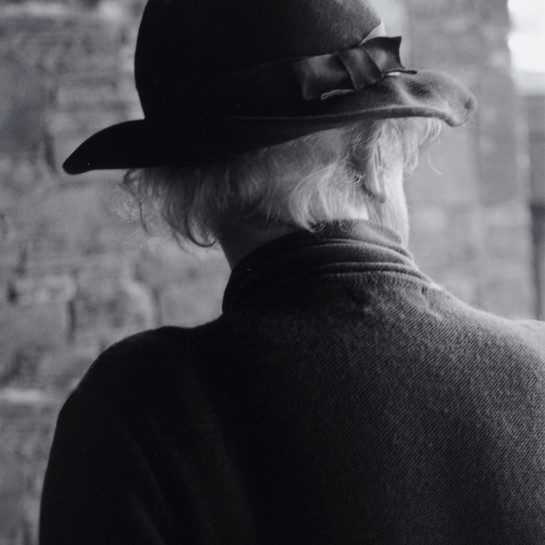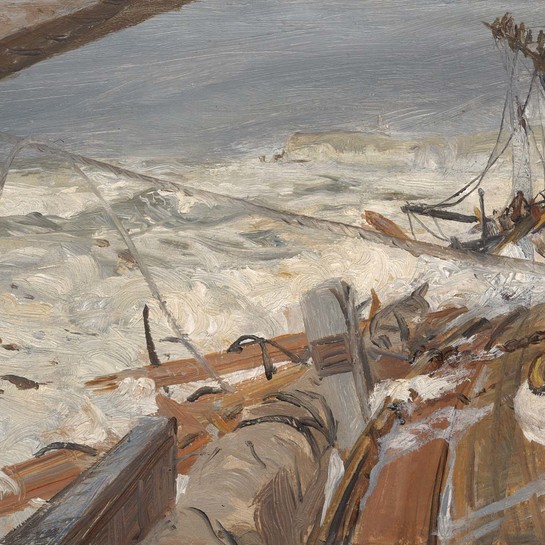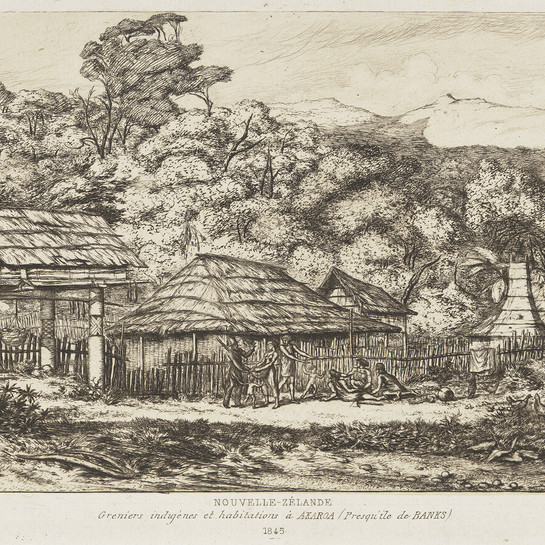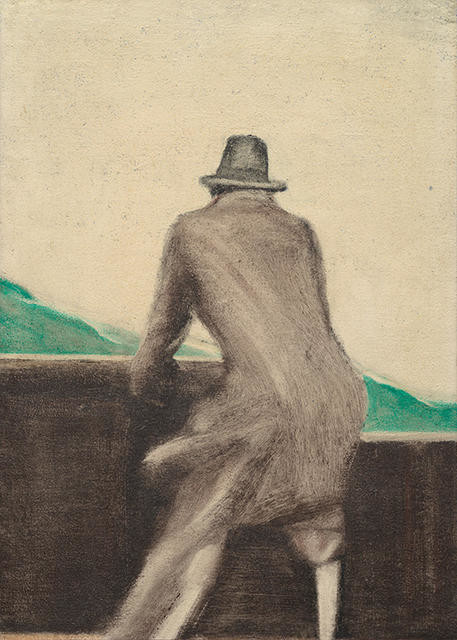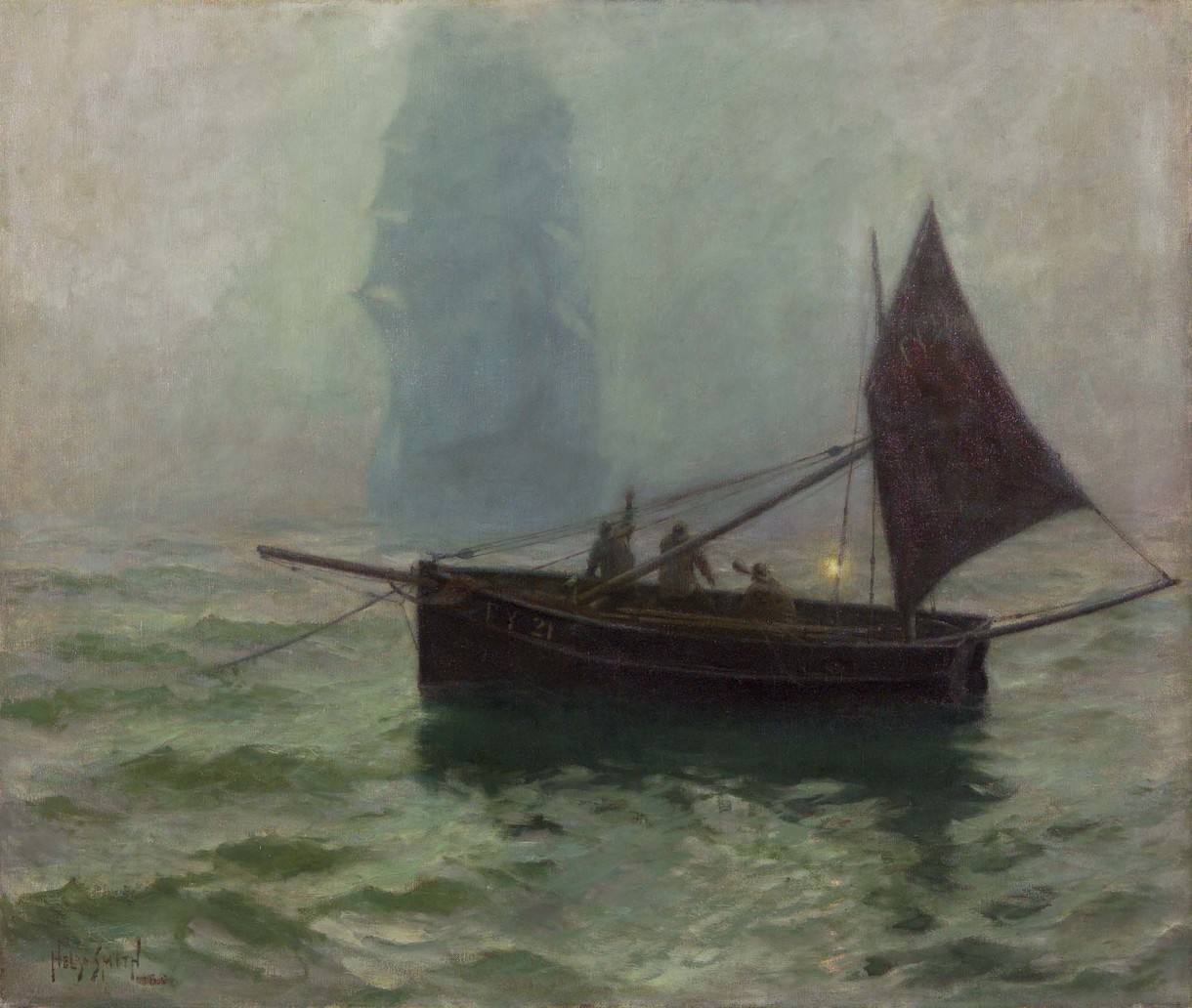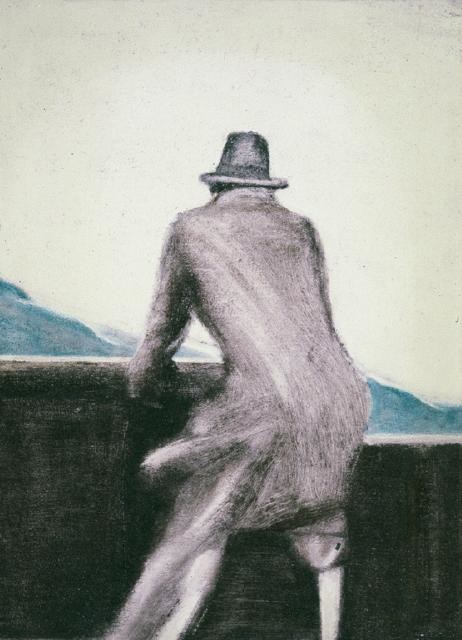Tony Fomison
Aotearoa New Zealand, b.1939, d.1990
Captain Ahab, peg-legged hunter of the white whale
- 1981
- Oil on canvas board
- Presented to the Gallery by Peter Wells, 1984
- 365 x 255mm
- 84/35
Tags: backs (object portions), hats, hills, men (male humans), people (agents), portraits, seamen
In Herman Melville’s famous 1851 novel Moby Dick, the troubled captain of a whaling ship becomes so obsessed with the whale that crushed his leg he spends all his time on deck, desperate to catch a glimpse, or even the scent, of his quarry. Ahab dominates our view in this brooding painting by Tony Fomison, bracing his whalebone leg against the ocean’s swell. Every line of Ahab’s body is focussed on the sea, but Moby Dick, the object of his “quenchless feud”, and the ultimate cause of his downfall, is nowhere to be seen.
(Absence, May 2023)
Exhibition History
Tony Fomison once described his own paintings as “brutal and lonely.” His study of Herman Melville’s Captain Ahab from Moby-Dick owns something of these qualities. The brooding Ahab, his outlook fixed on the depths below and beyond, thinks of nothing but revenge on the White Whale, the great monster that crushed his leg, leaving him with a humiliating whalebone substitute.
Melville’s epic novel was published in 1851. By then whale populations were depleted and whaling activity off New Zealand shores was nearing its end. Fomison was mindful of whaling as a central aspect of our local history, including through his youthful experience of working as an archaeologist on Banks Peninsula. It is possible to connect his unwavering whaling captain with the earliest Europeans to settle in the South Island, many of whom married local Ngāi Tahu women. Fomison’s Ahab seems to represent a proxy collective ancestor.
(Kā Honoka, 18 December 2015 – 28 August 2016)
